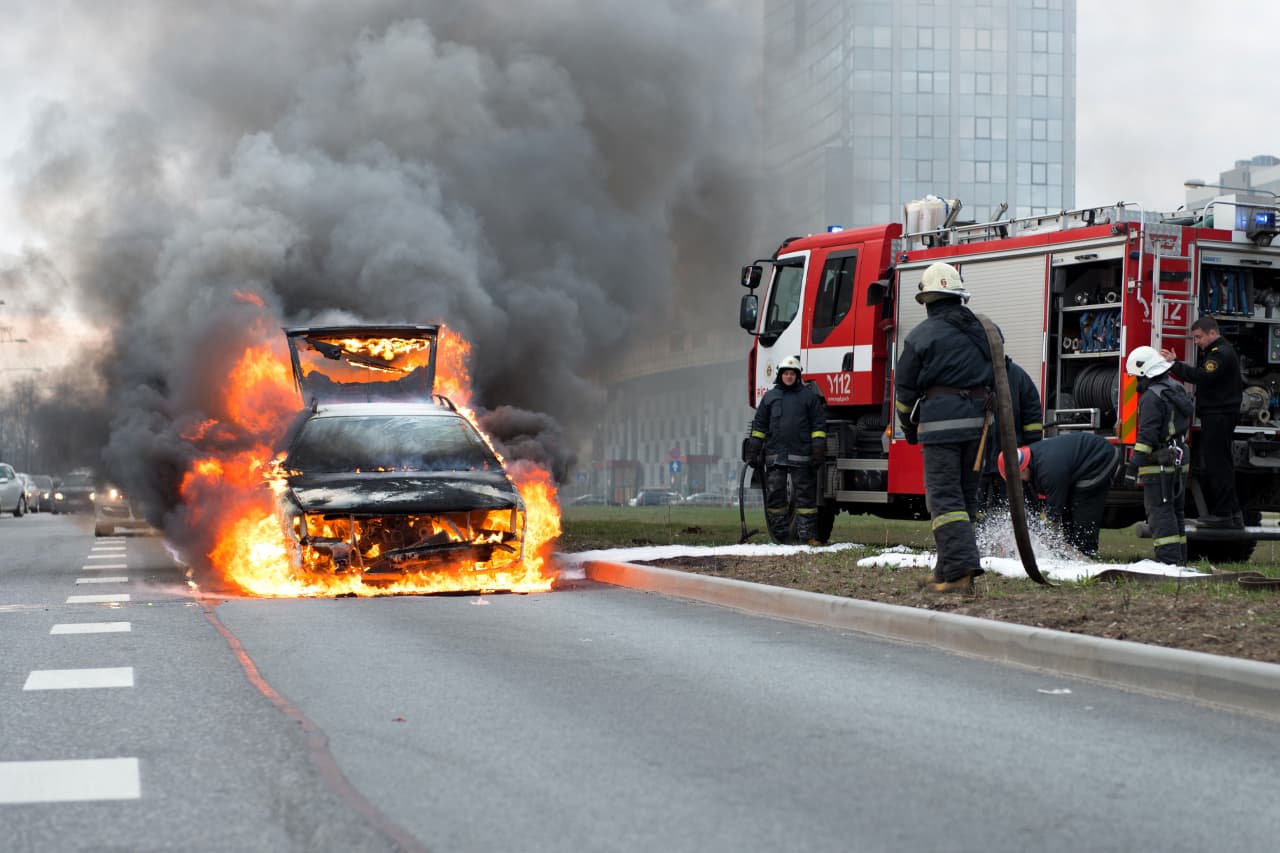
Investigators believe that two vehicles were racing when a driver lost control of his car and slid into a tree.
When officers arrived, a car was fully engulfed in flames and the driver was dead inside it. Pre-wreck video form near the scene shows this vehicle and another one driving close together at a very high rate of speed. The wreck happened near the intersection of Nordoff Drive and Ridgeland Terrace.
According to witnesses, the other vehicle stopped briefly and then fled the scene. Police officers have no leads as to the identity of the vehicle or its occupants.
Excessive velocity is a factor in about a third of the fatal car wrecks in New York. According to the laws of physics, speed is a double whammy. It increases the risk of a wreck as well as the force in a collision.
Newton’s First Law of Motion states that bodies in motion remain in motion in a straight line unless a powerful outside force changes their trajectories. In other words, a fast-moving vehicle is much more difficult to control than a slow-moving vehicle.
When these vehicles approach curves or corners, the drivers must pull hard on the steering wheels to alter their paths. As a result, drivers normally oversteer. Then, they over-correct in a desperate attempt to regain control. Unfortunately, the result is usually a loss of control.
Furthermore, speed multiplies the force in a collision between two objects, according to Isaac Newton’s Second Law of Motion.
There’s an old story that a penny dropped from the top of the Empire State Building is fatal to a pedestrian on the sidewalk below. That story is mostly false, despite some evidence to the contrary. However, a penny dropped from that distance could give a pedestrian a powerful headache. In other words, speed multiples the force in a collision.
So, in the car crash context, speed basically transforms a non-injury fender bender into a serious injury collision. Some of these serious injuries, which are often permanent, include:
Speed plays a key role in injury severity. Whiplash is a good example. Following a low-speed crash, the mild head/neck nerve damage often heals on its own, if the victim gets some rest. But that’s not possible following a high-speed collision.
If a New York personal injury attorney proves negligence, or a lack of care, compensation is available for these and other injuries. This compensation usually includes money for economic losses, such as medical bills, and noneconomic losses, such as pain and suffering.
Legally, these wrecks could involve the negligence per se doctrine or the ordinary negligence rule. Negligence per se is a violation of a safety statute, like the speed limit law. If a safety law violation substantially causes injury, these tortfeasors (negligent drivers) could be responsible for damages as a matter of law.
Ordinary negligence is basically a lack of care. This legal doctrine comes from a long line of cases. One of the oldest ones is Donoghue v. Stevenson. After Ms. Donoghue found a dead snail in her beer bottle, she sued the beer bottler under the then-novel theory that “it was the duty of the defender to provide a system of working his business that was safe, and would not allow snails to get into his ginger beer bottles (including the said bottle).”
The court agreed with Ms. Donoghue and articulated the neighbor principle. This doctrine was based on the Golden Rule (do unto others as you would have them do unto you) which New York school children once memorized.
The neighbor principle eventually became the duty of care. This duty applies not only to beer bottlers and deceased mollusks, but also to drivers and their vehicles.
Available compensation is usually higher in hit-and-run wrecks than in other crashes. Since the other driver did not remain at the scene, the evidence is usually entirely one-sided. Plus, many New York jurors dislike hit-and-run drivers and are keen to punish them.
Many of these wrecks are like the one in the above story. There is very little evidence to go on. Because of this lack of evidence, police investigators often quickly give up in these situations. But the burden of proof is much lower in civil court. Victims need only prove facts, such as who was driving a car at the time of a wreck, by a preponderance of the evidence (more likely than not). So, a little evidence goes a long way.
Assume a witness saw a red SUV run over a pedestrian and not stop. There are about a gazillion red SUVs in New York. So, that evidence is almost worthless in criminal court. But a New York personal injury attorney can take this bit of evidence and usually identify the vehicle’s owner. Since it’s more likely than not that the owner was driving the vehicle, this tiny bit of evidence could hold up in civil court.
High-speed car wrecks usually cause serious injuries. For a free consultation with an experienced personal injury lawyer in New York, contact the Pianko Law Group, PLLC. You have a limited amount of time to act.